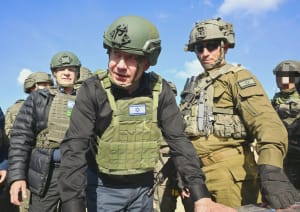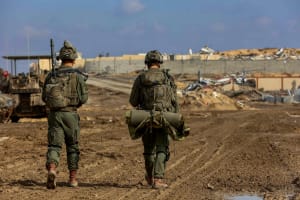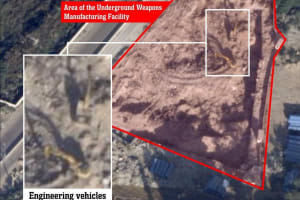IDF says Gaza offensive intentionally slow, aims at pressuring Hamas into releasing more hostages
WSJ: Hamas can’t pay salaries of fighters due to Israel cutting aid deliveries

Responding to criticism that the fighting in the Gaza Strip was slow and ineffective, the Israel Defense Forces (IDF) clarified on Wednesday that its current strategy aims to pressure Hamas into a hostage deal, rather than destroy the terror group.
Army officials, in addition to a Wall Street Journal report, pointed to signs of Hamas starting to suffer tangible effects due to this strategy, however, the group has still not agreed to the latest hostage deal proposal.
A major offensive of the kind reportedly in preparation for months would collapse the current negotiations and endanger the lives of the Israeli hostages, military sources told The Times of Israel.
Defense Minister Israel Katz has repeatedly threatened a major offensive, but the IDF says there is currently no deadline for the start of the operation, and that it is awaiting the decision of the political leadership.
The IDF resumed the fighting on March 18 with airstrikes and a limited ground offensive, launching an operation named “Strength and Sword.”
While troops from three divisions are currently fighting in Gaza, overall numbers are much lower than in previous rounds of fighting, and so far, only some 350 Hamas terrorists have been eliminated, as the other terrorists have largely evaded advancing troops.
Army sources said that Hamas has quickly pivoted from a new attack plan that it created during the ceasefire toward a defensive tactic of simply avoiding gunbattles with Israeli soldiers.
“We are severely harming Hamas, but we have not yet defeated it,” IDF sources told Ynet News.
“Hamas apparently understands that we are still not in the big offensive against it and, therefore, it is conserving effort and moved its forces backward, but from day to day it is trying more to harm our forces from the opposite side, with sniping and anti-tank missiles, and as time passes and we enter deeper into the territory, the friction will increase.”
“We are advancing slowly and safely, and therefore, so far, we have fewer casualties. We could have captured the axis that cuts between Rafah and Khan Yunis within six hours, and we deliberately preferred that it happen within a week so as not to take fire from the flanks, and today this axis is safely 600–700 meters wide,” IDF sources said.
The military also argues that despite the hostage negotiations not having led to any results so far, it has identified signs that the military pressure, coupled with the prevention of humanitarian aid, is influencing Hamas.
“The stoppage of humanitarian aid about a month ago led to damage to Hamas’ governance in the Strip, price increases, and pressure on Hamas from the citizens,” military officials said.
Indicators that the pressure is having an impact include ongoing anti-Hamas protests, multiple instances of Hamas members being killed by local clans, and the group’s inability to stop approximately 250,000 Gazans from fleeing to humanitarian zones in the south.
The IDF’s estimates were confirmed in a Wall Street Journal report on Thursday, which stated that Hamas is unable to pay its fighters' salaries due to the complete halt in humanitarian aid deliveries.
Before that, Hamas would steal large quantities of the aid, selling it back to the population to raise the cash it needed to pay its employees, including terrorists in its military branch.
Now, Hamas has stopped paying salaries to many of its administrative employees altogether, while fighters and political leaders, who have been specific targets of Israel’s air campaign, have reportedly been receiving only about half of their usual salaries.
Regular Hamas fighters previously received monthly salaries ranging from $200 to $300, according to intelligence officials cited by The Wall Street Journal. Before the war, the terror group received $15 million per month from Qatar, in addition to global fundraising efforts that brought its financial reserves to an estimated $500 million.
However, Israel has clamped down on the smuggling of cash and also recently eliminated a key money changer and several high-ranking administrative officials of the group.
Hamas circumvented some of this by using its overseas funds to purchase humanitarian aid that was transferred to Gaza, where it was sold and turned back into cash.
It is also likely that, despite security checks, Hamas was able to smuggle in some cash through the aid deliveries.
Hamas is reportedly facing a liquidity crisis serious enough to potentially weaken its hold on its members, and force it to accept a new ceasefire and hostage deal, according to the report.

The All Israel News Staff is a team of journalists in Israel.
You might also like to read this:

















